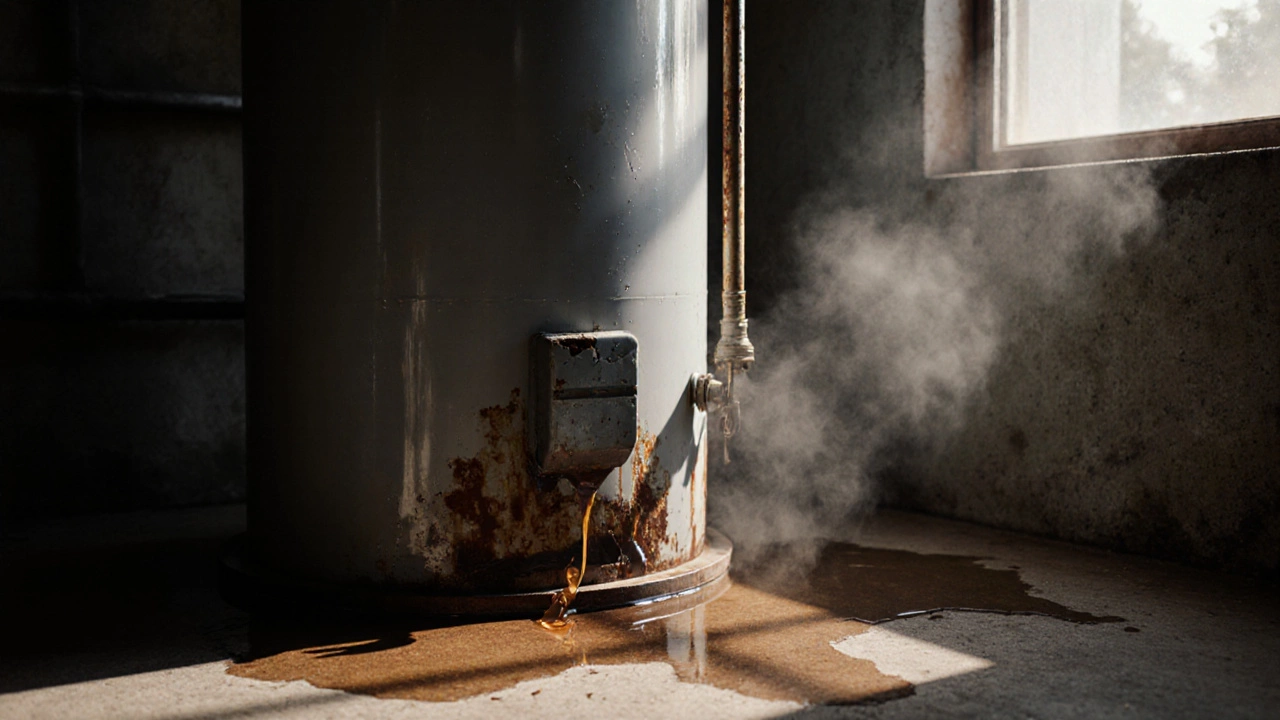
Learn the real signs your hot water heater is failing-rusty water, strange noises, low hot water, leaks, and age. Don't wait until it breaks. Get ahead of failure with practical advice for New Zealand homes.
When your water heater, a household appliance that heats and stores water for showers, sinks, and laundry. Also known as a hot water tank, it's one of the most taken-for-granted systems in your home starts acting up, it doesn’t always scream for help—it just quietly stops working. That’s why paying attention to water heater signs matters. Most units last 8 to 12 years, but many fail earlier because people ignore the small clues. A strange noise, discolored water, or inconsistent heat aren’t just annoyances—they’re red flags that your system is nearing the end of its life.
One of the clearest water heater failure, a breakdown in the system’s ability to produce or maintain hot water signs is rust-colored water. That’s not dirt—it’s corrosion inside the tank, usually from a worn-out anode rod that’s no longer protecting the metal. Another big one? Water pooling around the base. Even a small puddle means the tank has a leak, and once that happens, repair isn’t an option—you need a replacement. Then there’s the lack of hot water. If you’re running out faster than before, or your shower goes cold after five minutes, the heating element or thermostat is likely failing. These aren’t random glitches. They’re predictable outcomes of aging components, sediment buildup, or lack of maintenance.
Don’t confuse a water heater repair, a fix aimed at restoring function without replacing the entire unit with a long-term solution. Replacing a faulty element or resetting a thermostat might bring back hot water for a few months, but if your unit is over 10 years old, you’re just delaying the inevitable. Many people wait until the heater completely dies, then panic when they’re stuck with a $1,500 emergency replacement. The smarter move? Watch the signs. If you’re hearing rumbling or popping sounds, that’s sediment at the bottom of the tank. It’s not dangerous, but it’s wasting energy and straining the system. Flushing the tank yearly can help, but if you haven’t done it in years, it’s probably too late to save it.
And here’s the thing: water heater lifespan, the average time a unit operates before needing replacement, typically 8 to 12 years isn’t just a number—it’s a countdown that starts the day you install it. Hard water, high usage, and skipping maintenance all shorten it. If you live in South Shields and your heater is pushing 10 years old, you’re already in the danger zone. The goal isn’t to fix every little issue. It’s to recognize when the cost of repairs adds up to more than a new unit—and when waiting could leave you without hot water on a Monday morning.
Below, you’ll find real-world guides on diagnosing these exact problems: how to test your heating element, why your water smells like rotten eggs, what to do when the pilot light won’t stay lit, and how to spot the warning signs before your tank bursts. These aren’t theoretical tips—they’re the same checks local technicians use when they show up at your door. You don’t need to be a plumber to understand them. You just need to know what to look for.

Learn the real signs your hot water heater is failing-rusty water, strange noises, low hot water, leaks, and age. Don't wait until it breaks. Get ahead of failure with practical advice for New Zealand homes.